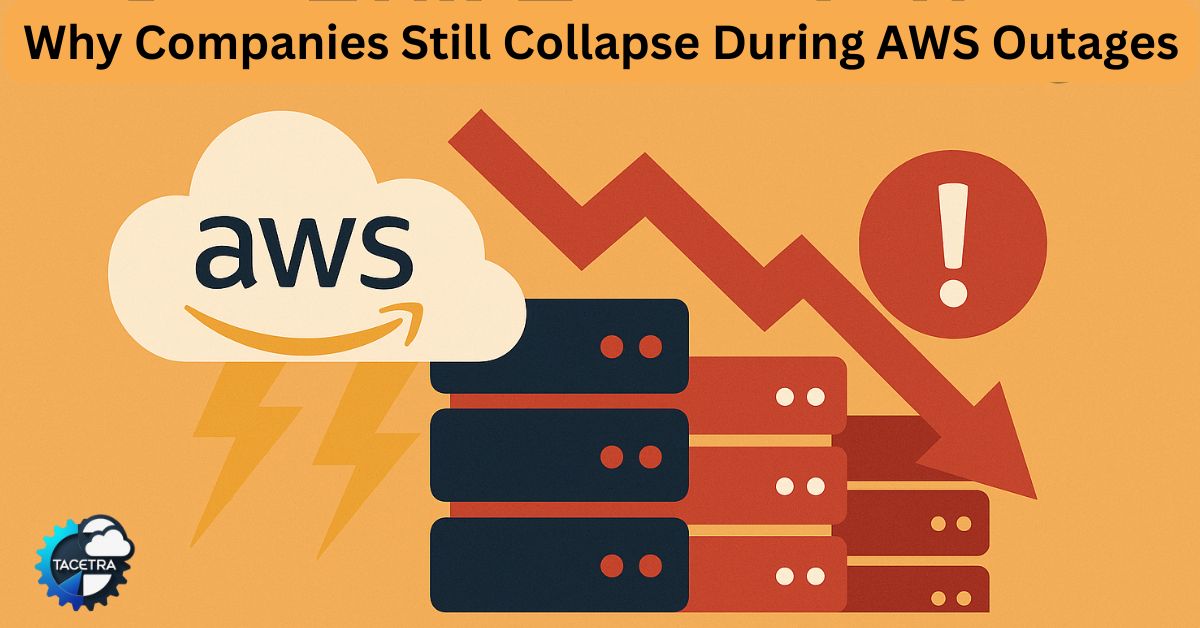AWS outages are not new. However, when the AWS region us-east-1 flickers, the tech world still stutters. Established platforms and agile startups alike collapse in nervous synchronicity. Why, after years of building supposedly “resilient” cloud systems, are we still asking: “How is everyone still going down?”
Cloud providers have long promised infinite scalability, multi-region redundancy, and reliable uptime. Yet when AWS stumbles, the industry’s house of cards falls fast. The shock isn’t the outage itself; it’s that seasoned engineers and well-funded companies keep failing the same test.
The Budget Meeting That Always Looks the Same
On paper, every CTO endorses a resilient, multi-region architecture. But in practice, things shift during budgeting: true cloud redundancy is expensive, complex, slower to deliver. It means higher compute bills, inter-region data transfer costs, complex replication/failover mechanisms, and slower development cycles.
The choice is often:
Option A: triple your IT costs.
Option B: accept that you’ll have half a day of downtime every five years.”
For many businesses — especially those not handling life-critical infrastructure — Option B becomes the cost-rational decision. When an outage hits, the collective shrug-of-relief often kicks in: “Everyone was down, so no one cares.” Downtime becomes normalised rather than exceptional.
The us-east-1 Trap and the Weakest Link
us-east-1 isn’t just “one region among many.” It hosts core AWS services and acts as the heartbeat for much of AWS’s global infrastructure. As a Redditor observed:
AWS themselves use us-east-1 to host a lot of services that help the other regions to run. So when those services break it affects the usability in other regions.
Even if your main workload is in a different region, your architecture may still rely on us-east-1 in ways you didn’t anticipate—making your failover strategy brittle at best.
And then there are the hidden weak links:
- A legacy database you’ve planned to migrate “later.”
- A third-party vendor running only in a single availability zone.
- Your internal “disaster recovery” wiki tucked away on the same cloud console that goes offline.
Many organisations have multi-region setup, but they haven’t tested it in years. When the crisis hits, they discover a critical dependency that turns their resilient architecture into a house of mirrors.
Resilience Isn’t A Feature — It’s A Cost
The cycle looks familiar:
outage → panic → budget for DR (disaster recovery) soars → systems get hardened → time passes → cost-cutting kicks in → next outage resets everything.
Here’s the key truth: Your vendor doesn’t provide resilience for free. It’s a recurring cost your business must budget, test and maintain. If you treat failover as “nice-to-have” or “something we’ll do later,” you’re one major failure away from paying in public, in cash, and in reputation.
The real mark of a senior dev or engineering lead isn’t deploying the fancy architecture—it’s convincing the business that spending on “systems you never use” may be the most valuable money you’ll ever spend.
Final Thoughts: Here’s the uncomfortable message
If you’re not willing to invest in architecture even when everything’s quiet, you’re betting on silence—not failure. And silence is the loudest sound in tech when disaster strikes.
Remember: Public Cloud and AWS outages aren’t just about technology. They’re about recognizing that resilience is business-critical. Your architecture isn’t done when you spin up services; it’s only done when you’ve proven your business can survive its failure.
Be proactive. Be relentless.
Because the next outage isn’t just a technical event—it’s a business reckoning!
Further Reading: AOC’s Warning on “Algorithmic Polarization” Hits Closer to Home Than We Think
Discover more from TACETRA
Subscribe to get the latest posts sent to your email.
